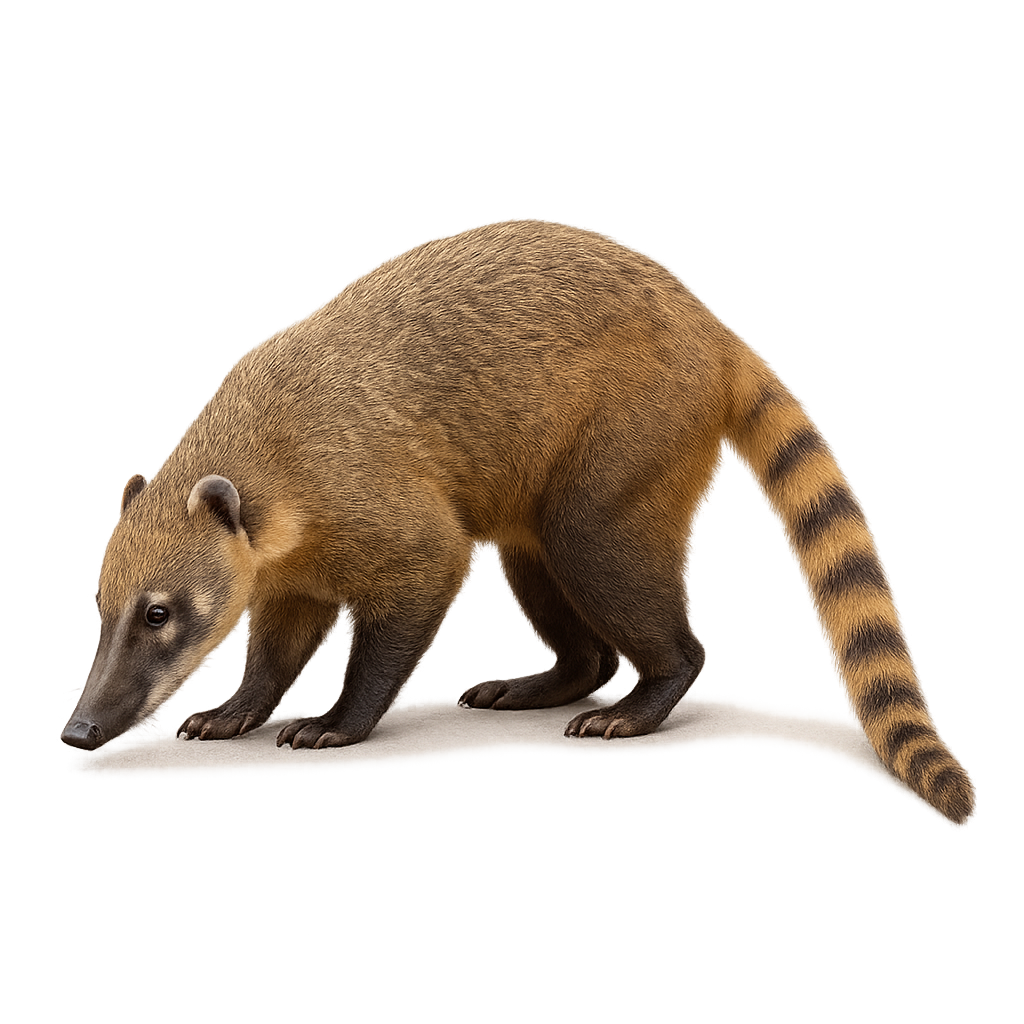Your wildlife photography guide.
Explore the coati in detail, study its behavior, prepare your shots.
Where to observe and photograph the coati in the wild
Learn where and when to spot the coati in the wild, how to identify the species based on distinctive features, and what natural environments it inhabits. The WildlifePhotographer app offers tailored photography tips that reflect the coati’s behavior, helping you capture better wildlife images. Explore the full species profile for key information including description, habitat, active periods, and approach techniques.
Coati
Scientific name: Nasua nasua

IUCN Status: Least Concern
Family: PROCYONIDAE
Group: Mammals
Sensitivity to human approach: Suspicious
Minimum approach distance: 20 m
Rut period: January to February
Gestation: 70-77 jours
Births: March to April
Habitat:
Tropical and subtropical forests, woodlands, savannas, and mountains
Activity period :
Primarily active during the day, with peak activity in the morning and late afternoon.
Identification and description:
The Coati roux is a mammal belonging to the raccoon family, easily recognized by its long ringed tail and elongated snout shaped like a trunk. Its fur is typically light brown to reddish-brown, with darker markings on the face and back. This small carnivore is known for its great agility, especially in trees where it moves with ease in search of food. It primarily inhabits tropical and subtropical forests in Central and South America.
The Coati roux is omnivorous and feeds on a wide variety of foods, including fruits, insects, small vertebrates, and eggs. It is often seen in family groups, especially females, while adult males tend to live alone. Although the Coati roux is a relatively adaptable animal, it is threatened by deforestation, hunting, and habitat loss. It plays an important role in seed dispersal and regulating populations of insects and small animals.
Recommended lens:
200 mm – adjust based on distance, desired framing (portrait or habitat), and approach conditions.
Photography tips:
Use a telephoto lens to photograph coatis in their natural environment. They are often seen foraging in groups. Photograph them early in the morning or late in the day for the best light. Be discreet to avoid scaring them away.
The WildlifePhotographer App is coming soon!
Be the first to explore the best nature spots, track rutting seasons, log your observations, and observe more wildlife.
Already 1 431 wildlife lovers subscribed worldwide

